The Daily Bloom

Coping with Miscarriage And Moving Through Grief
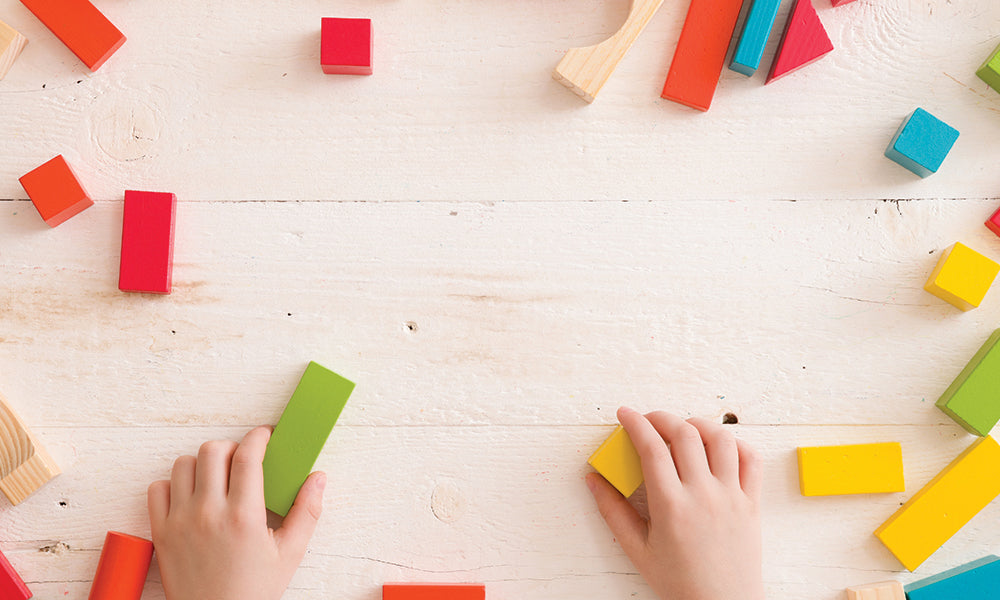
Milestones in the First Two Years: A Month-by-Month Guide to Your Baby's Development
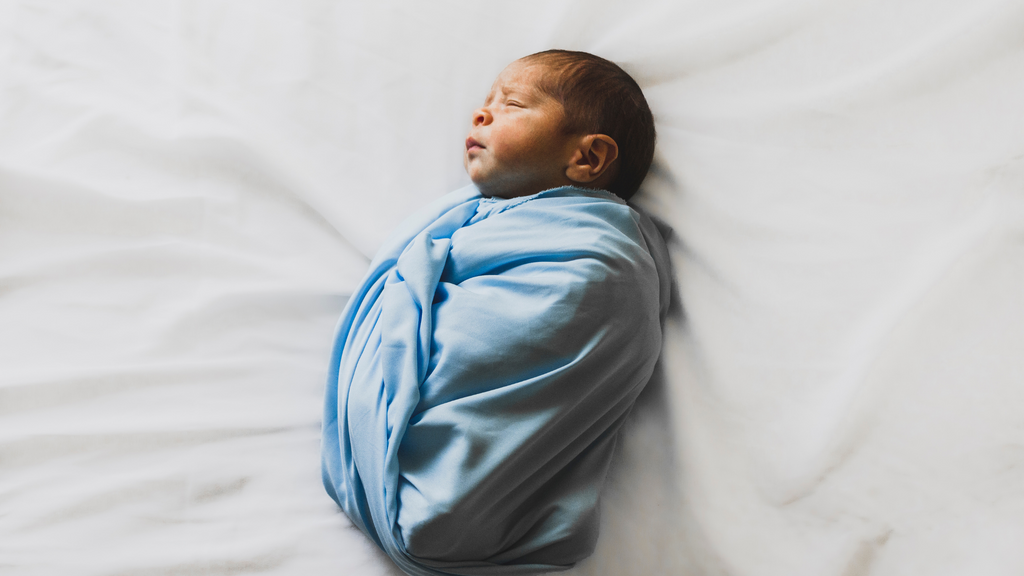
8 Sleep Tips to Help Baby (and Parents) Get Some Rest

I’m not one to celebrate made-up holidays, but as a first-time parent to a five-month-old, World Sleep Day is one that I am very much looking forward to partaking in this year.
While I was pregnant, sleep seemed to be the one topic that was always brought up in conversation with friends and family members who already had kids. “Get as much sleep as you can now, you’ll never sleep again!” warned my sister. “Don’t worry, you’ll get to sleep again… one day,” a friend said with a laugh.
Needless to say, like most first-time moms, I was stressed and worried — not just about popping out a baby or having to figure out how to take care of her (though yes, that also concerned me), but mostly because I didn’t know how much sleep I’d be getting once she arrived.
Five months later, I am happy to report that I am getting much more sleep than I had originally thought, due to the fact that my daughter is a good sleeper. Hallelujah!
While I know all babies are different, I’m also a believer that babies love routine and consistency, and there are many things you can do to help your baby become a better sleeper. While you shouldn’t try to sleep train a newborn (many pediatricians and experts don’t recommend sleep training your baby until they are around 4-6 months), there are plenty of tactics you can employ from the get-go to set your baby up for sleep success later on.
Below are some simple tips that I found helped my baby sleep better at night — and, as a result, us parents, too!
1 | Learn to swaddle
I’m a big fan of Dr. Harvey Karp’s 5 S's method. My husband and I practiced the 5 S’s (swaddle, swing, shush, lay on their side or stomach, and suck) from the very start and found that it really made a difference… especially the swaddling! While some will argue that their babies hate being swaddled, Dr. Karp believes that every baby prefers it because when they were in the womb their limbs were similarly packed together close to their bodies. It’s comforting, calming, and, when used correctly, can help your baby sleep better.
There are tons of resources online to help you learn how to properly swaddle your baby. There are also sacks and pouches that can make swaddling even easier. When my daughter was born, we used both swaddle blankets and sacks to see which one she preferred. It might take a little trial and error, but with practice, you’ll find one that your baby likes.
2 | Play white noise
Before my daughter was born, a dear friend of mine suggested an affordable, tiny sound machine. She swore by it, used it for every nap, and never left home without it. I remembered this helpful tip and packed one with me in my hospital bag. Sure, enough, when they did the hearing test for my daughter, she was understandably upset and fussy so I brought out the sound machine and it worked instantly. Since then, we’ve always used white noise to help her fall asleep and will keep it on through her naps and while sleeping at night. Like being swaddled, it reminds them of being in the womb.
3 | Keep it dark
This tip seems obvious, but it’s an important one! Any amount of light — especially in the evening — can stimulate your baby or make them think it’s daytime. This isn’t as important when they’re fresh newborns, but by the time they’re a few months old, they are more sensitive to the sights and sounds around them. If your baby’s room allows for a lot of light, consider buying blackout curtains. I would also suggest not using a night light while your baby is sleeping — though if you need light for middle-of-the-night feedings or diaper changes, try using a very dim, soft light.
4 | Change into a fresh diaper
Imagine going to bed all warm and comfortable and then suddenly realizing you’re wet and cold. That would certainly wake you up, wouldn’t it? Diaper changes every few hours are inevitable when baby is a newborn, but to ensure your little one gets as much restful sleep as possible, always change them into a fresh diaper before bed.
5 | Consider a pacifier
Pacifiers can sometimes be a controversial topic, but in my experience, they help... A LOT. I know one day we are going to have to deal with having to wean her off the “binky,” but I don’t think I’d trade that impending struggle for all of the hours it has helped her fall asleep or soothed her when she’s upset. It’s worth noting that most doctors suggest not introducing a pacifier until your baby has gotten the hang of breastfeeding, as it could possibly lead to nipple confusion. Also, make sure you buy the right pacifier for your baby’s age. Now that my daughter is five months old, she’s graduated to a pacifier with a bigger nipple.
6 | Rock and pat
Ah, the rock-your-baby-to-sleep dance! You will feel like you’re constantly swinging and swaying, but it will be worth it! Rocking and patting your baby remind them of being in the womb. Some babies prefer to be pat on their butts, backs, or thighs. There are also many baby swings and bassinets that can help you rock your baby to sleep. I used both the mamaRoo (to soothe my baby when she was fussy) and the SNOO (to help her sleep at night). I know some parents who don’t like to rely on these gadgets, but I have found them to be extremely helpful, and when you’re an exhausted parent, you take assistance anywhere you can get it!
7 | Establish a bedtime routine
Creating a bedtime routine will help clue your baby in that it’s time for bed. Around the same time every night (for us, this is between 6-7pm), plan on the same routine: give your baby a bath, read a bedtime story, or feed them in the same spot. This ritual will comfort and relax your little one and will help them well into their toddler years.
8 | Make sure your baby is well-fed
In my experience, a well-fed baby is a happy baby and a happy baby tends to sleep longer and more comfortably than one that is not. I find that when my daughter has eaten well — not just for her last feeding, but for all of her feedings throughout the day — she sleeps best and longest through the night. Most of the time babies wake up for two reasons: they’re either hungry or need their diaper changed. While this has worked best for me personally, there are lots of theories surrounding cluster feedings and nighttime feedings (and dream feeds), so I suggest reading up on all of them, consulting your pediatrician, and figuring out what is best for you and your baby.
*Always consult with your pediatrician before making any major changes or if you have any questions about these practices.
ABOUT THE AUTHOR:
Sara Tan is a writer and editor. She is the co-founder and co-host of beauty podcast Gloss Angeles and the Beauty Director at Refinery29. She has over 12 years of editorial experience and was most recently the Senior Fashion and Beauty Editor at Bustle. She has contributed to various women’s and lifestyle publications including Allure, InStyle, People, Parents, Coveteur, BRIDES, and Women’s Health.
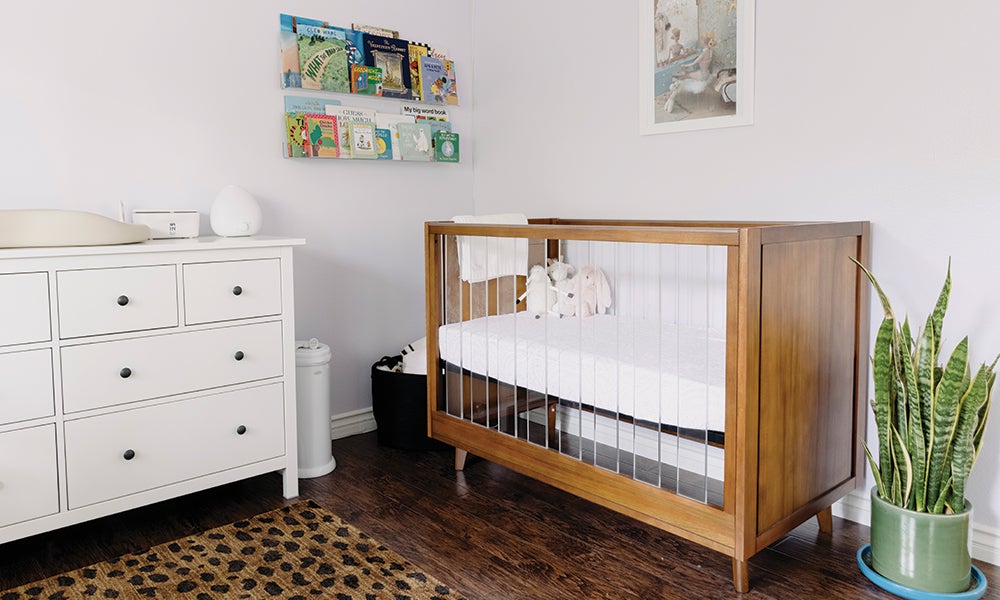
How to Transition from a Bassinet to a Crib
When it comes to your baby’s first few months of life, things are hectic (to say the very least). At the same time, things can move and develop at a rapid pace — including when it comes to your baby’s sleep hygiene.
Before you know it, it’s time for your baby to move from a bassinet to a crib. But when is the right time, and how can you make this transition successful?
For answers, we spoke to Jenni June, CLC, a certified baby and toddler sleep consultant, lactation counselor, and mom of four.
Here are Jenni’s expert tips, tricks, and must-knows from her experience as both a professional pediatric sleep consultant and mother.
When is it time to transition from a bassinet to a crib?
Jenni says the ideal time to transition from a bassinet to a crib is at the 4-month mark.“
This is when they start rolling over and movement becomes a process of self-settling to sleep or going back to sleep,” she begins. “It is also when babies start creating strong associations with their sleep environment.”
What’s the gold standard for the baby’s crib and bedroom environment?
For starters, Jenni says that the crib and sleep environment should meet all the recommendations for safe sleep as outlined by the American Academy of Pediatrics (AAP).Among other things, the AAP outlines:
- the baby’s ideal sleeping position
- how firm the baby mattress should be
- what should and shouldn’t be in the crib
- notes on room sharing
- Of course, the baby’s sleeping environment should also be free from loud noises, excess light, and other such disturbances.
On top of that, Jenni notes the terrific developments in technology when it comes to baby monitors. With them, “many parents feel they are better able to monitor their baby for safety while also providing a sleep environment that is conducive to undisrupted sleep — especially during the day — by moving the baby to their crib in their own nursery,” she explains.
What else should parents know about easing their baby into crib sleeping?
Here are a few final tips and bits of wisdom when it comes to transitioning from a bassinet to a crib.
Erratic sleep schedules are natural
Jenni says that during your baby’s first 16 weeks of life, “their sleep is designed to be light, active, sporadic, and disorganized.”
But why are these sporadic sleep patterns normal?
“Babies aren’t born with a circadian rhythm; they don't have the ability to produce melatonin on a timed basis,” she explains.
Light sleeping during this period is a byproduct of a survival instinct of sorts. As Jenni continues, this sleep pattern is built-in so your baby “can easily resuscitate should their fragile physical vitals fall below normal.”
Read: If your baby has trouble sleeping, that surely doesn’t mean that you’re to blame!
Weed out the noise
Next, she advises against going down the Google/message board rabbit hole. “There’s a poor, unsafe, and loud overload of conflicting internet ‘advice’ that instills fear into new parents,” she starts.
Reading too much into misinformation or unfounded modalities can hinder a parent’s “ability to trust their own parenting instincts that help us fully attune to and follow the baby's unique rhythms and needs,” she continues. This rings true when it comes to your baby’s sleep and otherwise.
Further, at this stage of your baby’s life, she advises against rigid protocols for sleep schedules and sleep training.
Trust your instincts + adjust accordingly
Finally, Jenni urges new parents and caretakers to trust their instincts and take it easy.
Ending on a positive note, she wants to let parents know that even if you face struggles transitioning from a bassinet to a crib, the experience should only be temporary.
“The good news is that you can't create any permanent bad sleep habits [in the baby’s ‘fourth trimester’],” she concludes. “It all changes once the baby is biologically capable of getting deeper, consolidated, more organized and restorative sleep at 4 months of age. This is when they do need you to evolve your care routines, sleep environment, and parenting responses to meet and match their evolving, developing needs for sleep.”
For more tips on pediatric sleep and other bits of baby wisdom, follow Jenni on Instagram.
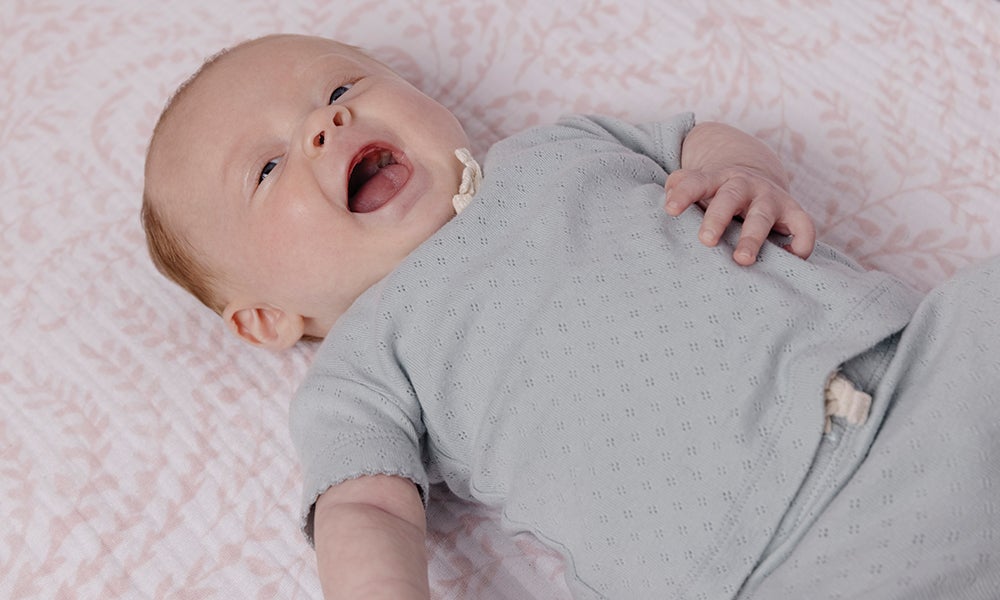
When to Stop Swaddling Your Baby
As a new parent, you likely have more questions about baby care than there are hours in the day.
But one of the most common you’ll come up on in regards to your newborn is: When should I stop swaddling my baby?
“All babies have a startle reflex called a Moro reflex for the first couple months of life,” begins Texas-based baby sleep consultant Caroline Pavlick. “While some grow out of this sooner than others, babies with a strong Moro reflex do best swaddled so as to prevent them from accidentally waking themselves by startling.”
Soon enough, however, every baby will outgrow the need for a swaddle.
Here’s a closer look at the when, why, and how of transitioning your baby out of the swaddle.
When to Stop Swaddling Your Baby
According to the American Academy of Pediatrics (AAP), the ideal time to stop swaddling your baby is around the 2-month mark. However, Caroline adds that this time frame may extend to 3 or 4 months.
Better yet, a more accurate point of reference to stop is when your baby attempts to (or successfully begins to) roll over. “Parents will see initial signs of rolling with their little one when the baby starts rolling to his or her side while sleeping, or during daytime play,” Caroline explains.
Other signs that it’s time to stop swaddling include them trying to break out of the swaddle or becoming more fussy or restless when wrapped up.
Why is This the Best Time?
Many parents choose to swaddle their newborns to comfort them and promote good sleep. After all, a swaddle is meant to mimic the mother’s womb and thus provides a safe and soothing sleep environment.
However, once your newborn develops and gathers strength to roll over, more serious health risks come into play. If they roll over to a face-down position while still swaddled, their ability to breathe freely gets extremely compromised.
Further, if they happen to gain enough strength to break free of the swaddle on their own, the loose fabric also poses serious health risks.
How to Transition Out of the Swaddle
Even if your baby shows signs that they’re ready to transition out of the swaddle, they may still have trouble adjusting to their new sleep regimen.
That said, here are three parting tips on how to successfully transition your baby out of the swaddle.
1. Ease into it
When it comes to major changes in your baby’s routine, it’s often best to start slowly and ease into a transitional period.
With that in mind, you’ll likely want to start having your baby sleep with one arm out for a few days — followed by both arms for another few days — before they grow comfortable with this new sense of physical freedom.
2. Invest in a sleep sack
Along the same lines of making a smooth transition, you may want to swap the swaddle for a sleep sack.
While not as restrictive as a swaddle, sleep sacks (aka: wearable blankets) are a popular choice to cover and soothe your baby as they sleep — without posing the same risks that loose blankets and other fabrics have.
3. Create a consistent routine and comfortable sleep environment
Last but not least, there are a number of ways to ensure that your newborn gets the most restful and restorative sleep possible.
This includes adhering to a regular sleep routine, which may entail:
- sticking to consistent nap times and bedtimes
- singing them to sleep
- giving them a pacifier to indicate it’s time to rest
- Caroline shares that your baby may also prefer to self-soothe by sucking on their fingers: “Sleep is enhanced tremendously when a baby learns natural ways of self-soothing by bringing their hand to mouth, especially if the baby won’t take a pacifier.”
In addition to establishing a routine, ensure your baby has a safe and comfortable sleeping environment by:
- ensuring the room temperature isn’t too hot or cold
- freeing the sleep area of excess fabrics and objects
- placing the baby to sleep on their back
- turning on a white noise machine
- By understanding when and why your baby is ready to stop being swaddled, you should feel empowered to start embarking on this exciting new step in their evolving sleep routine.
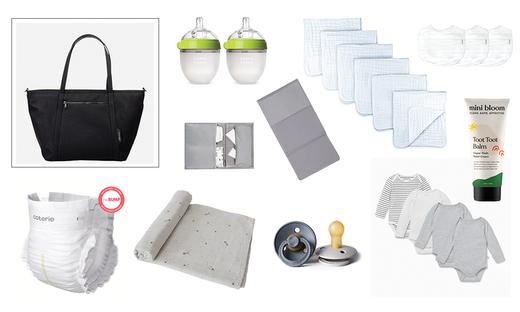
The Essentials Edit: Newborn Diaper Bag
You’re a new mom and you are officially ready to go. Post-baby you lugged your hospital bag everywhere you went (just in case), and now that you’ve actually entered the mama club you’re just as prepared… or, at least you’re trying to be.
These are our go-to essentials that every newborn mother needs to fill her diaper bag to avoid any baby-tastrophies -- everything from organic burp cloths to Toot Toot Balm to the best on-the-go pumps.
Because every mom knows… it’s better to be safe than sorry!

2x extra clothes for baby (We love this 4-pack by MORI)

Elvie Pump if breastfeeding or Bobbie Formula
1x extra clothes for mom (spit up!)
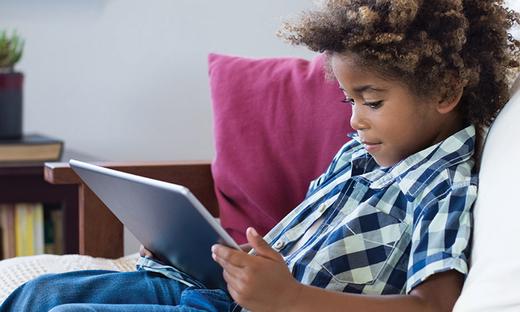
Lauren’s List: The Best Platforms to Help Entertain Your Kids
Whether you're engaging in pretend play or looking for creative, curious, and increasingly imaginative children's activities, I've rounded up my favorite printable and digital resources for you and your kids for at home or on the road activities.
Lauren xx

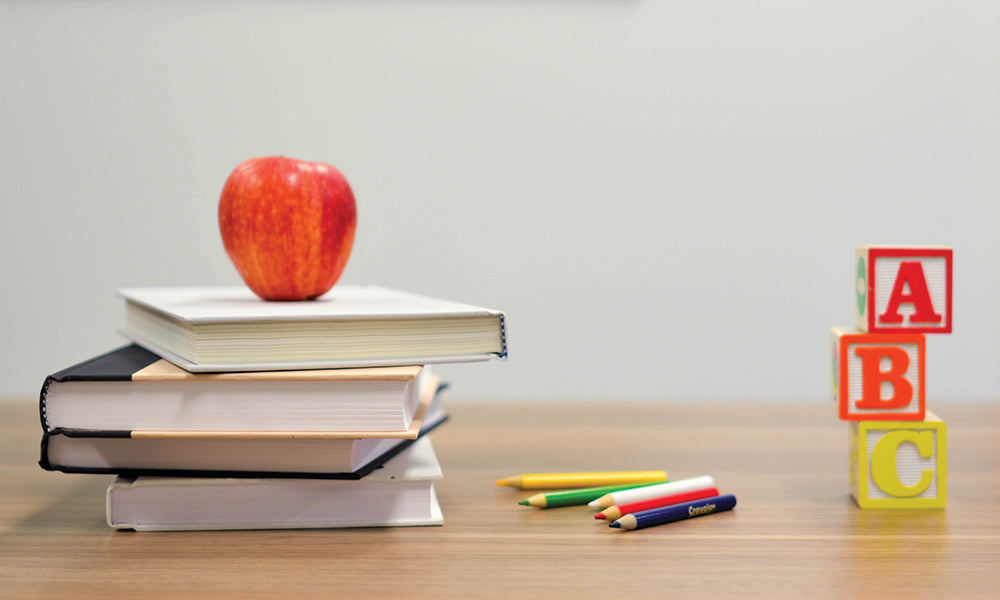
Back to School Essentials List
*We've geared this list to be best for grades 1-5.
Back-to-the-Basics List:
Our Go-To List:
Re-Set with Comfort List:

1212 Pajamas
(to ensure a good night’s rest)

Joah Love Masks
(most comfy for the kids)

Evolve Masks
(best disposable masks)

Design Meets Protection — A Guide to Safeguarding Your Home
While there are varying stages in which your child will develop and require different safety precautions, it is important to look at your home as a whole and — actually — get down on your child’s eye level to discover the many safety precautions that need to be taken.
Overall tips: (Note: While some of these may sound overboard, children are fast, curious, and they want to touch and play with EVERYTHING — so it’s always best to be overly cautious!)
- Look for safety hazards in your home from your child's viewpoint.
- Use plug protectors on all unused electrical outlets.
- Install covers on electrical outlets.
- Make sure no electrical cords run underneath rugs.
- Keep rooms free of small toys/objects, plastic bags, balloons, legos, magnets, and any other items that could pose a choking hazard.
- Install smoke detectors on every level of your home and near bedrooms.
- Install carbon monoxide meters near sleeping areas in your homes if you use gas, oil heat, or have an attached garage.
- Place cushions/padding on the corners of furniture.
- Cut window blind cords or use safety tassels and inner cord stops to help prevent your child from getting caught in window blind cord loops.
- Secure furniture and large appliances to the wall so your child can't tip them over if they climb on them.
As your child practices balance they may reach for or tip over items as they learn to brace themselves. Be sure all fixtures such as floor lamps, flower pots, and small tables won’t collapse easily. Keep large, lightweight items out of your child’s reach.
This is also the time you should put safety locks on all cabinets and drawers (especially in the kitchen, laundry room, and bathrooms) that hold aerosol sprays, cleaning products, lotions, medications, and other potentially hazardous items. When in doubt, lock it out!
In addition to keeping children off the stairs, baby gates can help keep your kids from entering rooms through wide doorways. Create a space(s) where they can roam freely. The best way to do this is to block off potential areas in which they can fall, trip, or venture into. The following gates are our go-to’s in varying situations:
- An adjustable swing stair gate with extensions around any type of stairs
- Portable mesh gates as a temporary barrier when you are visiting friends or family members that don't have a child-proofed home
- Fireplace gate to keep children away from the fireplace!

Mini Bloom’s Gift Guide for the Whole Family… Even the In-Laws!
From mom-hacking finds for our fellow mom friends to cozy home goods for our in-laws to everything fun and entertaining for the little ones, this is what’s giving us all the holiday feels this year.
Gifts for a Fellow Mama from our PR + Marketing Manager (and new mama!), Morgan Brown

Mini Bloom Discovery Kit
I am so in love with these products, not just for my daughter... but for myself, too! I use Fresh N' Clean daily and love how Hallelujah Nipple Balm works universally –– I always keep one at my desk to use on my lips and cuticles!

Sakara Meal Program
Because any busy mama knows it's hard to make yourself a healthy meal with a newborn! Sakara does all the work for you and delivers fresh meals to your door weekly! #IYKYK

Hill House Match Me Athena Nap Dress Kit
Yes, I am one of those moms that loves matching with her daughter! This adorable matching set is on my holiday wish list, so naturally, my friends and their mini-me’s should match us as well!

Goldfaden MD Head To Toe Glow Set
As we all know, having a baby is hard on your body, but these four products in Goldfaden’s MD’s Head to Toe Glow Set have been a lifesaver! I used their Firm Believer body contouring serum on my tummy and bum throughout my pregnancy and swear it is what kept my stretch marks at bay.

Éliou About Me Personalized Necklace
My husband gifted me this necklace with my daughter's name last year for my birthday and it is by far one of the most precious gifts I have ever received.

Parachute Baby Bath Bundle
I am a fan of everything Parachute, so naturally this Parachute Baby Bath Bundle was one of the first things I put on my baby registry. It is now one of my favorite items to gift new moms.

Lovevery Play Kits
A friend gifted this to me when my daughter was born and I have loved receiving all the different kits based on your babies' developmental stage.

Artipoppe
There are baby carriers and then there is Artipoppe! Not only is this carrier great for newborns and toddlers, it is also ‘Oh So Fashionable!’
Gifts for Children from Mini Bloom’s Director of Partnerships, Alexa Allen

Knots Be Gone
My six-year-old niece, Ada, has the most beautiful curly hair, but those thick curls sure do come with their fair share of tangles! I know she will adore Knots Be Gone.

Suzie Kondi
I have this Suzie Kondi set and wear it all the time. It’s the best travel outfit and I know my niece will love the soft velour and will especially love matching with her favorite Auntie!

Fujifilm Instax Mini 11 Instant Camera
Available in a variety of fun colors, this Instant Camera is a fun way for the next generation to get their camera fix in… ready and waiting for Instagram, of course!

Little People, Big Dreams ‘Women in Art’ Book
This adorable book celebrates the iconic women who have changed the art world. With three hardcover books in the set, children learn about the lives of Frida Kahlo, Coco Chanel, and Audrey Hepburn.

The Reckless Unicorn UNO Card Game
One of my all-time favorite games, UNO is fun for both children and adults alike. Just make sure you prepare for some screaming! UNO!!!
Gifts for the In-Laws from Mini Bloom’s Founder, Lauren Wolk-Goldfaden

Artifact Uprising’s Custom Photo Calendar
A custom photo calendar featuring the family is something Grandma and Grandpa will cherish year-round!

WMS Paper Goods
Everything from chic notebooks to “to-do” lists to planners, WMS upgrades your desk in classic designs that everyone can use.

Apothecary Body Wash
Known for creating simple products with natural ingredients, FRAMA’s unisex body wash has hints of sandalwood, cedar wood, and ylang ylang, and smells heavenly.

Nature of Things Calming Bath Immersions
Whether it’s a Restorative Floral Bath or a Fortifying Magnesium Soak, your body will appreciate the plants, minerals, and elements that come together to create a curative and preventive bath experience.

Barefoot Dreams
It doesn’t matter if it’s Barefoot Dreams’ robes, socks, or throws, prepare for the coziest material ever… and an extra cuddly gift.

Compartes’ Gourmet Chocolates
Because we all know sweet treats are always a hit, Compartes’ Gourmet Chocolates come in many options (fruits, truffles, nuts!) -- and can even be customized! Mini Bloom chocolates, anyone?

Fall Activities the Whole Family Will Love, Starring Pumpkins
There is no fall season without decorating pumpkins ahead of Halloween. Before we share some DIY ways to spruce them up, we wanted to mention that if you live in Los Angeles, San Diego or West Palm Beach, Florida, Uber Eats will deliver your favorite seasonal items to your front door from Mr. Jack O' Lanterns Pumpkin Patch. Pumpkins range from $5 - $15 and carving and painting kits are from $12-$25. The added bonus is that the delivery fee is free on items over $15.
Okay, so you now have your pumpkins. You can either go the traditional and messier route of carving and saving the seeds and filling for pumpkin confections later or you and your kids could get creative with crayons. This is perfect for anyone who isn’t exactly Picasso with a paint brush. All you need is a blow dryer, glue and a wide array of colors. (We suggest doubling up with the same color.)
Another way to make your pumpkins stand out is giving them a marbled effect using nail polish. This method is a bit more complicated, but the results are super chic and will have your friends asking where you bought them. You will need a few colors, a tub for distilled, room temperature water and best if you use mini pumpkins.
For those that want to avoid decorating real pumpkins, creating them with papier mâché is a fun idea. We admit this is the most intricate option, but it will absolutely be the most rewarding. Instructables has explained how to turn a balloon into a pumpkin with an easy-to-follow step-by-step guide, complete with photos.



Another activity that doesn’t involve pumpkins or crafts is going on a nature walk. With the leaves changing colors and the temperature being more manageable, walking or even hiking with the family is a great way to spend time together and get in those steps. During the walk, play I Spy, collect acorns and foliage and then plan to have a picnic while taking in the views.
Heading to a farm for some outdoor fun is always a welcome idea. So many places during the fall months have petting zoos, corn mazes, apple picking and hay rides. Also, during the pandemic, some places got creative with pop-up Halloween sites that you can drive through for a socially distant option. In Calabasas, California, for example, the Nights of the Jack is an immersive experience for all ages.
Back home, it’s time to wind down with a movie… but with a twist. Instead of piling on the couch, set up a screen and projector outdoors. Bring out blankets, bean bag chairs and loads of popcorn for an evening under the stars. Movie suggestions: Hocus Pocus, The Addams Family, Coco, October Sky and finally The Blind Side.

5 Holiday Traditions to Start with Your Family That Will Continue Through the Years
For Mini Bloom’s founder Lauren Wolk Goldfaden, “traditions make the holiday season sparkle in so many ways.” Her family-of-four has incorporated some old and new traditions. “We adopt a few children every year and provide gifts for them which my kids love doing,” she says. “They get to be a part of the entire process – shopping, wrapping the presents and dropping them off.” And giving back deserves a sweet treat. “I have to say our favorite holiday tradition that we have done for years now is a holiday cookie decorating party,” Lauren adds. “The kids get to invite a few friends over to decorate (and of course eat!) holiday cookies. There’s just something about this day – the smell of cookies and the glow on the kids’ faces that always make this event feel extra special.”
DJ Lindsay Luv has a similar sentiment as food is the basis of her family’s tradition. “We make monkey bread and bloody Marys every Christmas morning,” the mom-of-two shares. “On Christmas Eve, I’m Italian, so we try and do the feast of the seven fishes.” Though her daughter and infant son are too young at the moment, she will incorporate a charitable aspect down the line as well. “As my kids get old enough, we will also have them pick out gifts to donate to those in need. It’s important to me they understand how lucky they are and how we can always help others who aren’t as fortunate. Christmas is for everyone.”

With family living in several states and a very nonstop life on the road, being home in Nashville for the holidays is “such a precious time” for Cassie Kelley. “Christmas Eve is a big event in our house,” she explains. “We host dinner for family and extended family. Before the kids go to bed, they get dressed in matching Christmas jammies and Santa arrives at our house before his big night to read "The Night Before Christmas" to everyone. It's always a mix of excitement and nostalgia that fills all of us up!"
Even aunties can have traditions of their own. DailyMail TV and Good Morning America 3 correspondent Alicia Quarles loves getting creative with her niece London and nephew Cayson. "We pull out the glue guns and get to work,” she notes. “We make wreaths, holiday bows for her hair and Christmas tree ornaments. It's so nice to pull out our creations from years past and then add new items to our collection."
And if you don’t want to wait until December like actress Camille Guaty-Kaye, she will be incorporating a new one for her son this Thanksgiving. “For my family, we’re starting a thankful tree this year,” she says. “It’s a great way to involve all the members of your family and any guests that come through your door in the month of November. On a fall decoration or as simple as a paper leaf cut out, write down what you're most thankful for and then place it on the tree (branch) as part of a reminder of everything we have to be grateful for.”













































